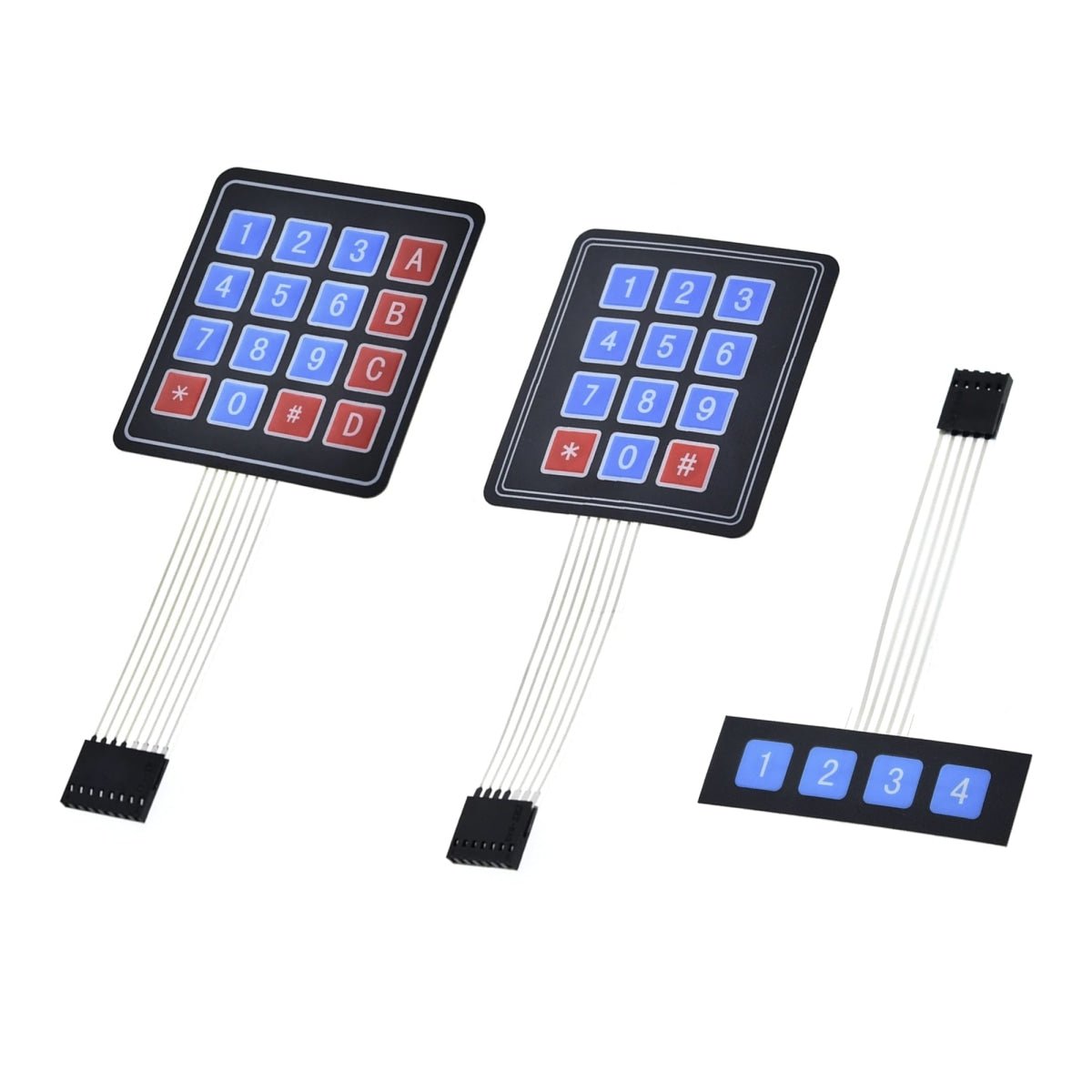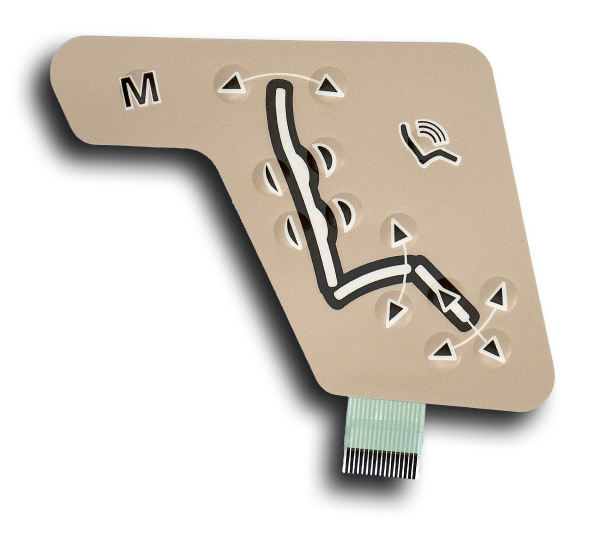Top Benefits of Using a Membrane Switch in Custom Control Panels
Wiki Article
Understanding Membrane Layer Changes: The Secret to Reputable and resilient Controls
Membrane switches over represent an important facet of modern-day user interface design, mixing performance with strength in numerous applications. These functional elements not just assist in user interaction yet are likewise crafted to stand up to the rigors of requiring environments, from medical tools to industrial machinery. Comprehending their construction, procedure, and the myriad benefits they provide is crucial for developers and engineers alike. As we explore the complexities of membrane layer switches, it ends up being clear that their function in boosting control systems is both profound and intricate, increasing concerns concerning exactly how ideal to take advantage of their capabilities in future innovations.
What Are Membrane Layer Buttons?
Membrane switches are an advanced service in the realm of user interface modern technology, combining capability and style seamlessly. These devices function as an interface between individuals and electronic systems, integrating numerous parts right into a compact format. Generally built from adaptable, thin layers of materials, membrane buttons are developed to react to touch, making it possible for customers to interact with equipment and electronic gadgets successfully.The main aspects of a membrane layer button include a printed circuit layer, visuals overlay, and a spacer layer that avoids unintentional activation. The visuals overlay can be customized to mirror brand identification or customer preferences, improving aesthetics while ensuring use. Membrane layer buttons are typically utilized in various applications, consisting of medical devices, consumer electronic devices, and industrial equipment, owing to their resilience and resistance to environmental variables such as wetness and dirt.
Among the essential advantages of membrane buttons is their capability to withstand damage, making them perfect for high-traffic environments. In addition, they are light-weight and call for marginal room, enabling cutting-edge layouts in item advancement. In general, membrane layer switches stand for a useful and effective option for contemporary digital user interfaces, weding innovation with user-centric layout principles.

Exactly How Membrane Switches Job
The procedure of membrane layer switches depend upon a basic yet reliable device that translates user input right into electronic signals. These buttons include numerous layers, usually including a visuals overlay, a spacer layer, and a circuit layer. When a user presses the switch, the top layer deforms, permitting a conductive aspect in the circuit layer to make contact with a corresponding conductive pad on the bottom of the graphic overlay. This call shuts the circuit and sends a digital signal to the tool, showing that the switch has been activated.The layout of membrane buttons can vary, however they frequently incorporate domes or tactile components to provide responses to the user, boosting the general experience. The materials made use of in membrane layer buttons, such as polyester or polycarbonate, add to their longevity and resistance to environmental variables, consisting of dampness and dirt. The published circuits are typically encapsulated, which protects them from wear and tear over time.

Advantages of Membrane Layer Buttons
Among the main benefits of membrane buttons is their adaptability in layout, permitting them to be customized to meet particular customer demands and aesthetic needs. This versatility reaches numerous markets, where different shapes, sizes, and colors can be employed to improve individual interaction and visual appeal.Furthermore, membrane switches are understood for their longevity. Built from durable products, they are resistant to dirt, moisture, and physical wear, which substantially expands their life expectancy contrasted to traditional mechanical switches. This durability makes them specifically ideal for high-traffic atmospheres and applications requiring longevity.

Furthermore, membrane layer switches offer a structured account, causing a thinner layout that can be integrated right into numerous tools without adding mass. This function not only boosts the aesthetic allure but also adds to a more ergonomic product design.

Applications of Membrane Buttons
Functional and straightforward, membrane buttons find applications across a wide variety of sectors, including medical gadgets, consumer electronics, and commercial equipment. In the clinical area, these switches are important to gadgets such as analysis tools, patient monitoring systems, and mixture pumps, where dependability and convenience of cleansing are crucial. Their ability to maintain and endure harsh settings capability makes them perfect for such applications.In consumer electronics, membrane layer buttons are made use of in items like microwaves, washing makers, and push-button controls - membrane switch. Their sleek design enables intuitive interface, boosting the general individual experience while supplying longevity and resistance to deterioration
Industrial devices likewise takes advantage of membrane layer switches, my latest blog post specifically in control panels for machinery and automation systems. These switches offer protection against dust and moisture, guaranteeing regular performance in tough settings. Furthermore, their adjustable functions allow makers to tailor them to details functional requirements, boosting efficiency and capability.
Picking the Right Membrane Switch
When choosing a membrane layer switch, it is vital to think about various variables that influence performance and viability for specific applications. The main considerations consist of environmental conditions, tactile feedback, toughness, and design specifications.
First, examine the operating atmosphere; buttons exposed to wetness, chemicals, or severe temperature levels require certain products to make certain longevity and performance. Next off, review the requirement for responsive feedback. Depending upon user communication, some applications might take advantage of a tactile reaction to validate activation, while others might favor a non-tactile style for visual factors.
Longevity is an additional crucial aspect; membrane layer switches should be developed to stand up to constant use, influences, and abrasion. Ensure the selected switch can withstand the expected lifecycle, especially in high-usage situations.
Final Thought
Finally, membrane layer changes function as crucial elements in the layout of trustworthy and long lasting control systems across various industries. Their compact layout, combined with robust construction and customizable attributes, boosts individual communication while guaranteeing long life sought after settings. The convenience of membrane layer switches allows for customized remedies that meet certain operational needs, reinforcing their importance in contemporary technology. membrane switch. As sectors proceed to develop, the relevance of incorporating effective membrane button solutions can not be overemphasized.Membrane layer switches over stand for an essential aspect of modern user interface style, mixing performance with durability in various applications.Membrane switches are an advanced service in the world of customer interface technology, combining capability and design effortlessly. Normally constructed from versatile, slim layers of materials, membrane buttons are created to respond to touch, making it possible for users to communicate with equipment and electronic tools effectively.
The layout of membrane buttons can differ, however they often integrate domes or his response responsive components to provide responses to the user, improving the general experience.In final thought, membrane changes offer as crucial components in the layout of reliable and sturdy control systems throughout numerous sectors.
Report this wiki page